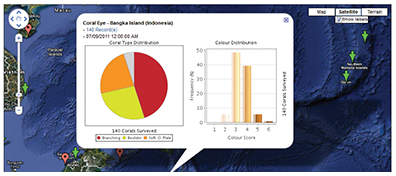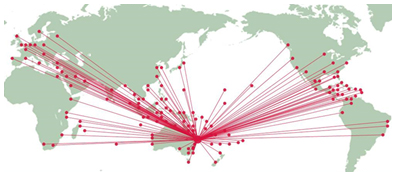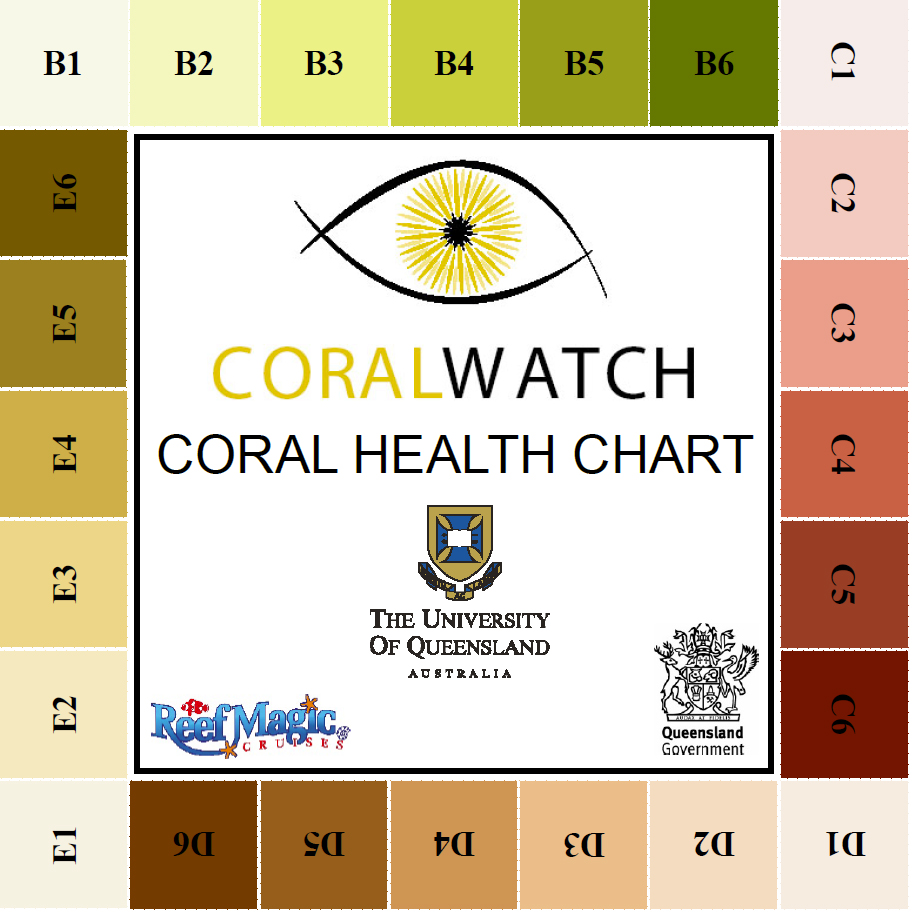
About CoralWatch
CoralWatch, based at The University of Queensland, Australia, is a well-established citizen science program founded in 2002.
CoralWatch integrates global coral health monitoring with education and public outreach creating reef awareness using simple and engaging tools. This provides people with accessible information about coral reefs and climate change, and hands-on experience collecting scientific data on coral bleaching using the Coral Health Chart. The chart is an easy-to-use tool to quantify changes in coral colour associated with coral bleaching on the reef. It is so simple, no prior training is needed and anyone can get involved. The chart is used in the field and classroom, is available in 12 languages and data on >230.000 corals from >1910 reefs in 79 countries is publicly accessible.
CoralWatch also provides regular workshops for communities, teachers and students, and has developed a range of high quality educational materials such as books, dvd, curriculum linked lesson plans. Many of these are freely available.
Aims and Objectives
CoralWatch aims to create public understanding of the value of reefs and provides opportunities to actively help save the reef through participation in scientific research and education.

CoralWatch manages
an interactive online space and database providing up-to-date data on reef conditions worldwide.

CoralWatch supports
an expanding network of volunteers engaged in coral health monitoring and building community capacity to respond to climate change and coral bleaching events.

CoralWatch provides
hands-on monitoring and education tools raising awareness of reef importance and issues encouraging behavioural change towards a sustainable, low-carbon future.
There are not enough scientists to monitor world’s reefs and now anyone can help collect valuable coral data.

Development of the Chart
In 2002, at a time when corals where bleaching on Heron Island, the world’s first Do-it-Yourself method to monitor coral bleaching was developed by scientists from The University of Queensland, Prof. Justin Marshall, Dr. Uli Siebeck, Prof. Ove Hoegh-Guldberg and Dr. Anke Kleuter. Coral fragments were put in controlled aquaria where the temperature was increased over several days to simulate a bleaching event. The changes in symbiont density and colours were measured and scientific analysis resulted in the development of the Coral Health Chart. The chart is a proxy indicator of symbiont density with a 6-point numerical scale. The brightness corresponds to the symbiont density and the four common coral colours assist selecting the accurate number. The chart was validated by comparing monitoring results of untrained vs. trained observers in different field conditions.
